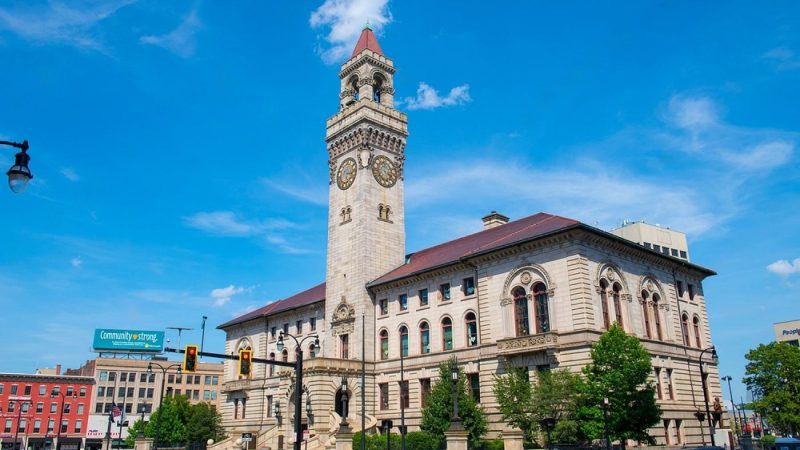Discovering Georgia’s Hidden Gems: The Enchanting Beaches of the Peach State”

Nestled along the southeastern coast of the United States, Georgia is renowned for its charming cities, rich history, and southern hospitality. However, beyond the well-known attractions lies a hidden treasure – the breathtaking beaches that grace Georgia’s coastline. While not as famous as some of their Florida or California counterparts, Georgia’s beaches offer a unique blend of natural beauty, tranquility, and diverse ecosystems. In this article, we will explore some of the enchanting beaches that make the Peach State a destination worth exploring.
Tybee Island – A Coastal Haven:
Starting our journey with Tybee Island, just a short drive from historic Savannah, this barrier island is a coastal haven for locals and visitors alike. Known as “Savannah’s Beach,” Tybee boasts a laid-back atmosphere and a wide, sandy shoreline. The iconic Tybee Island Light Station stands proudly against the coastal backdrop, providing a historic charm to the beach. Visitors can bask in the sun, stroll along the Pier and Pavilion, or explore the island’s rich history at the Fort Pulaski National Monument.
Jekyll Island – A Southern Gem:
Moving south, we arrive at Jekyll Island, a barrier island known for its untouched beauty and diverse landscapes. Jekyll Island State Park offers 10 miles of pristine beaches, surrounded by maritime forests and salt marshes. Driftwood Beach, on the northern tip of the island, is a photographer’s dream with its hauntingly beautiful trees that stand as remnants of a maritime forest eroded by the sea. Jekyll Island also boasts the historic district, where visitors can explore the Jekyll Island Club National Historic Landmark.
Cumberland Island – A Wilderness Escape:
For those seeking a more secluded and wild beach experience, Cumberland Island is the perfect destination. Accessible only by ferry, this pristine barrier island is a designated National Seashore, ensuring its protection and preservation. Cumberland Island offers unspoiled beaches, maritime forests, and a unique blend of wildlife, including wild horses that roam freely. The Dungeness Ruins, the remnants of a Carnegie family mansion, add a touch of history to this natural paradise.
St. Simons Island – Southern Charm and Beaches:
Continuing our coastal exploration, we arrive at St. Simons Island, where southern charm meets stunning beaches. East Beach is a favorite among locals and visitors for its wide expanse of sand and gentle waves. The St. Simons Island Lighthouse and Museum provide a historical backdrop to the beach, allowing visitors to learn about the island’s maritime history. The village area offers boutique shopping and delectable dining options, making it a perfect complement to a day at the beach.
Sapelo Island – A Coastal Wilderness Retreat:
Tucked away on the Georgia coast, Sapelo Island remains a hidden gem for nature enthusiasts and those seeking a tranquil escape. Accessible only by ferry, Sapelo Island offers pristine beaches, maritime forests, and unique cultural experiences. The Reynolds Mansion, a stately home built in 1917, is a testament to the island’s history and charm. Visitors can explore the Nanny Goat Beach, a secluded spot that epitomizes the untouched beauty of Sapelo Island.
Conclusion:
While Georgia may not be the first state that comes to mind when thinking of beach destinations, its coastal offerings are nothing short of spectacular. From the bustling shores of Tybee Island to the wild beauty of Cumberland Island, each beach along Georgia’s coast has its own unique character and charm. Whether you’re looking for a relaxing day in the sun, a historical excursion, or a wilderness retreat, Georgia’s beaches have something to offer for every type of traveler. So, the next time you plan a coastal getaway, consider exploring the hidden gems of the Peach State – you might just find yourself falling in love with the enchanting beaches that grace Georgia’s coastline.
1. What are the best beaches to visit in Georgia? Georgia boasts several beautiful beaches along its coast. Some popular ones include Tybee Island, Jekyll Island, St. Simons Island, Cumberland Island, and Sapelo Island.
2. Are Georgia’s beaches crowded? It depends on the time of year and the specific beach. During peak tourist seasons like summer, beaches can get crowded, especially on weekends. However, some beaches, like those on Cumberland and Sapelo Islands, tend to be more secluded and less crowded.
3. Are there any activities to do besides sunbathing and swimming? Yes, Georgia’s beaches offer a variety of activities. Visitors can enjoy fishing, kayaking, paddleboarding, beachcombing, birdwatching, hiking, and exploring historical sites and nature reserves.
4. Is it safe to swim in the ocean at Georgia’s beaches? Generally, yes, it is safe to swim in the ocean at Georgia’s beaches. However, it’s essential to be aware of local beach conditions, such as rip currents and jellyfish, and to heed any warnings or advisories from lifeguards or beach officials.
5. Can I bring my pet to Georgia’s beaches? Pet policies vary depending on the beach. Some beaches allow pets on leashes during certain times of the year, while others have restrictions or designated pet-friendly areas. It’s best to check the specific beach’s regulations before bringing your pet.
6. Are there amenities like restrooms and food vendors available at the beaches? Many of Georgia’s beaches offer amenities such as restrooms, showers, picnic areas, and concessions. However, the availability of amenities may vary depending on the beach, so it’s a good idea to check beforehand.
7. Are there any entrance fees to access Georgia’s beaches? Some beaches, like those on Jekyll Island and Cumberland Island, require entrance fees or parking fees. The fees help support the maintenance and preservation of these natural areas. Prices may vary depending on the beach and whether you arrive by car or ferry.
8. Can I camp on Georgia’s beaches? Camping is allowed on some of Georgia’s beaches, such as Cumberland Island and Sapelo Island. However, camping regulations, permits, and reservations may be required. It’s essential to plan ahead and familiarize yourself with the specific rules for camping on each beach.
9. Are Georgia’s beaches family-friendly? Yes, Georgia’s beaches are generally family-friendly destinations. Many beaches offer shallow, calm waters suitable for children, as well as family-friendly activities and amenities. However, it’s always a good idea to supervise children closely, especially when swimming in the ocean.
10. What is the best time of year to visit Georgia’s beaches? The best time to visit Georgia’s beaches depends on personal preferences and activities. Summer is popular for swimming and sunbathing, but spring and fall offer milder temperatures and fewer crowds. Winter can be chilly, but it’s an excellent time for birdwatching and exploring without the crowds.






